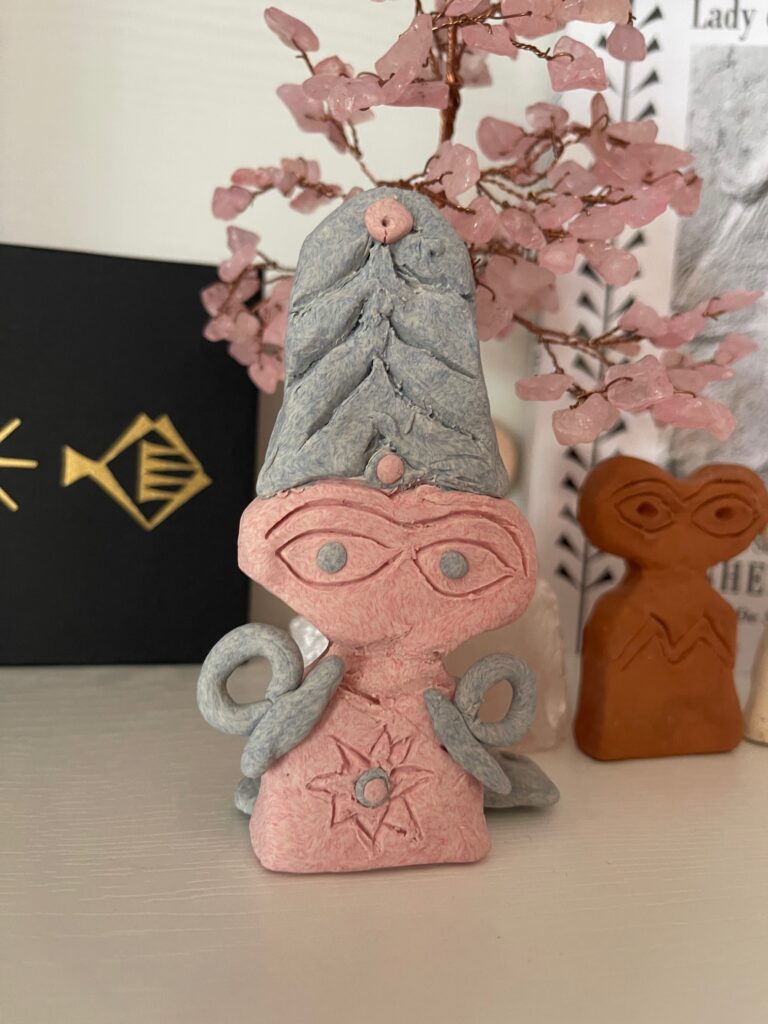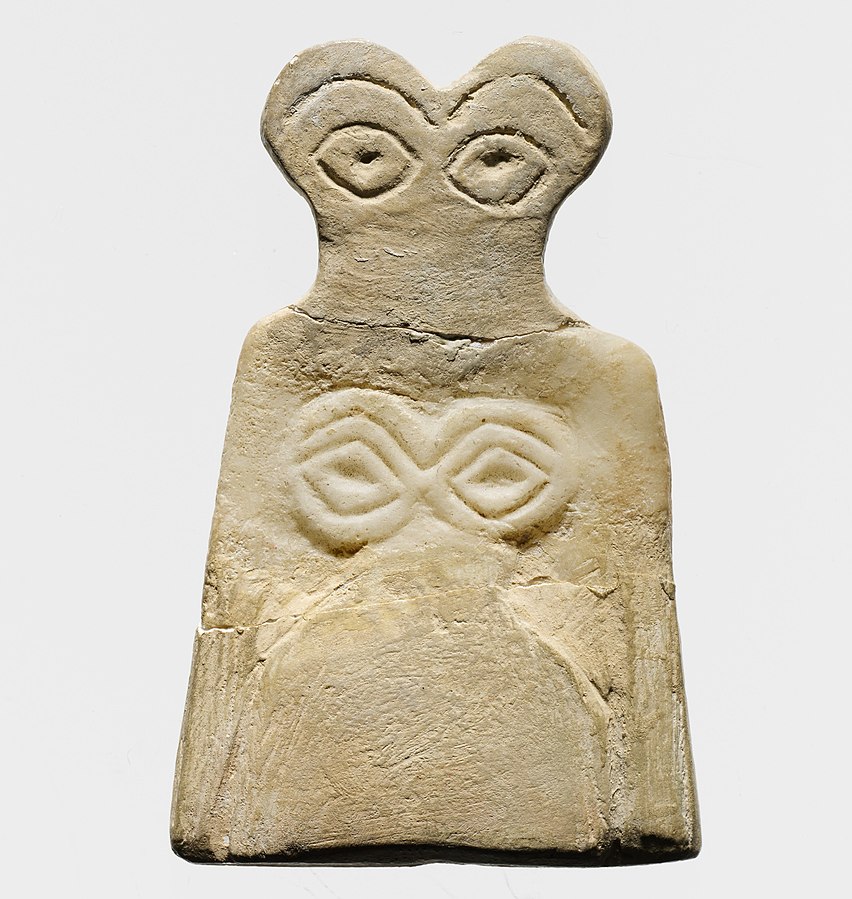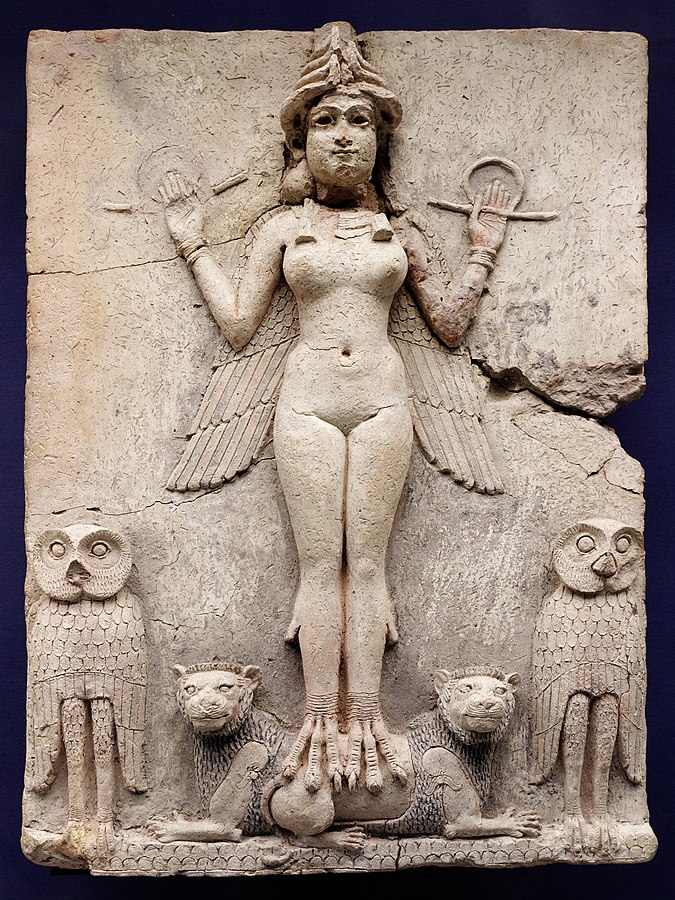A few months ago, I wanted to make a figurine of Inanna using some colored stone-esque Sculpey clay I found in my hoard of craft supplies. I’m not great at art, so I didn’t want to attempt anything too ambitious. I’ve always been drawn to the eye idol figurines that were uncovered in Tell Brak in what was once Northern Mesopotamia. They are cute and simple to make. I still have a few reproductions that I made about 20 years ago when I first got interested in Mesopotamian history/mythology as a teenager (I was a weird kid, which is probably why I’m now a weird adult). So I had the idea to combine imagery from the Burney Relief (aka Queen of the Night), an ancient relief sculpture that most archaeologists believe to represent Inanna/Ishtar.

I was originally going to make it all pink, but I didn’t have enough pink, so I used light blue for the details an accessories. I think the blue eyes work very well, considering blue eyes, typically made from lapis lazuli (considered a sacred stone), are seen in a lot of Mesopotamian art.
The original eye idols were mainly found in what is now Tell Brak in modern-day Syria. A smaller number of these sculptures were also later found in Tell Hamoukar. They are probably meant to be abstract representations of human worshipers meant as votive offerings to an as-of-yet unidentified deity or deities. The large, prominent eyes likely represent attentiveness to the gods, as do the large eyes seen throughout Mesopotamian art. They are NOT supposed to be “grey aliens” as the “ancient astronauts” conspiracy theorists claim. For more information than you probably want about these figurines, see The Eyes Have It: An In-Depth Study of the Tell Brak Eye Idols in the 4th Millennium BCE: with a primary focus on function and meaning (Honors Thesis by Arabella Cooper from the University of Syndey).

The Burney Relief, also known as Queen of the Night, is the best known image of Inanna/Ishtar, though there is some debate by archaeologist over exactly which goddess it is meant to represent. Most believe it is meant to be Inanna/Ishtar, though there are some who argue that it may be Ereshkigal or Lilith (Lilith is NOT a Mesopotamian deity. She is a figure from Semitic folklore). It is unknown where exactly this ancient work of art was actually discovered, as it wasn’t excavated archaeologically. It most likely originates from Southern Mesopotamia, but the exact site location is unknown. The relief features iconography commonly associated with Inanna/Ishtar, including the rod and ring symbol, lions, wings, and the horned headdress.
